Homeowners Associations (HOAs) play a vital role in maintaining the quality and aesthetics of residential communities. Part of the responsibility is to ensure that outdoor amenities, such as parks, swimming pools, and playgrounds, are well-maintained and safe for residents to enjoy. This is achieved through regular inspections. Let’s dive into the rules and procedures governing outdoor amenities inspections for HOAs to ensure safe and thriving communities.
Establishing Inspection Schedules:
HOAs should establish inspection schedules to ensure that outdoor amenities are examined on a regular basis. These schedules can be monthly, quarterly, or annually, depending on the specific amenities and the size of the community. Clear communication of these schedules is crucial, allowing homeowners to be aware of any temporary closures or restricted access during this procedure.
Safety and Maintenance Guidelines:
Comprehensive safety and maintenance guidelines should be established by your HOA for outdoor amenities. These guidelines should cover aspects such as structural integrity, cleanliness, landscaping, equipment functionality, and adherence to local building codes and regulations. By clearly outlining these expectations, the HOA can ensure that inspections are conducted with a focus on safety and the overall well-being of the community.
Inspection Checklist:
Developing an inspection checklist is essential for efficient and consistent inspections. The checklist should encompass all relevant areas and elements of the outdoor amenities. For example, in a swimming pool inspection, the checklist might include water quality, cleanliness of pool decks, functioning of safety equipment, and compliance with fencing regulations. The checklist serves as a guide for inspectors, ensuring that all necessary aspects are thoroughly evaluated during each inspection.
Qualified Inspectors:
HOAs should engage qualified and experienced inspectors to carry out outdoor amenity inspections. These individuals should possess expertise in the specific amenities being inspected, as well as a strong understanding of safety regulations and maintenance requirements. By employing professionals, HOAs can enhance the accuracy and reliability of inspections, thereby promoting a secure and enjoyable community environment.
Inspection Findings:
During inspections, it is crucial to document any findings accurately. Inspectors should record both positive aspects and areas requiring attention or repair. Documentation should include detailed notes, photographs, and any recommended actions. This documentation serves as a valuable reference for the HOA, allowing them to address any issues promptly and keep track of maintenance history.
Prompt Issue Resolution:
Once inspection findings have been documented, it is essential for the HOA to take prompt action to address any identified issues. This might involve scheduling repairs, maintenance, or improvements to the outdoor amenities. Clear communication with residents about the progress of issue resolution fosters transparency and reassures homeowners that their concerns are being addressed diligently.
Resident Engagement:
HOAs should actively involve residents in the outdoor amenity inspection process. This can be achieved through periodic community meetings or surveys to gather feedback and suggestions regarding the amenities. Encouraging residents to report any potential safety hazards or maintenance concerns helps maintain a collaborative and proactive approach to amenities upkeep.
Outdoor amenities inspections are a critical aspect of HOA responsibilities, ensuring the safety, functionality, and attractiveness of community spaces. By adhering to established rules and procedures and maintaining regular inspections with prompt issue resolution, your HOA enhances the overall quality of life within the community, making it an inviting place to call home.
For more information or questions regarding HOA management, contact our team at Atlantic & Pacific Management at (858) 672-3100 or visit https://aphoamgmt.com/contact/.
